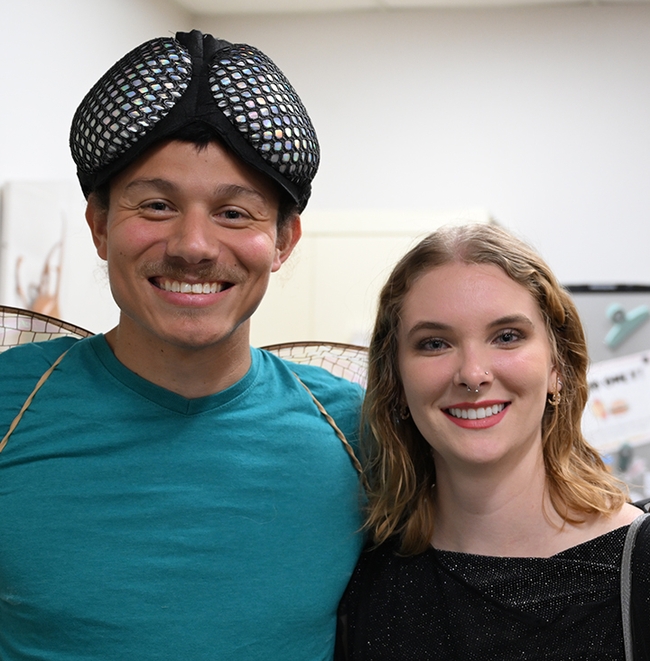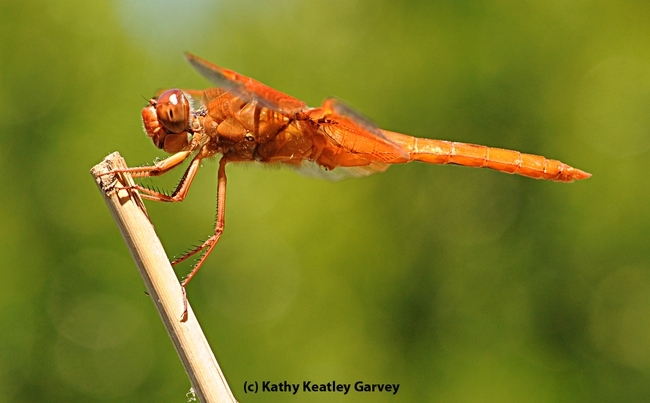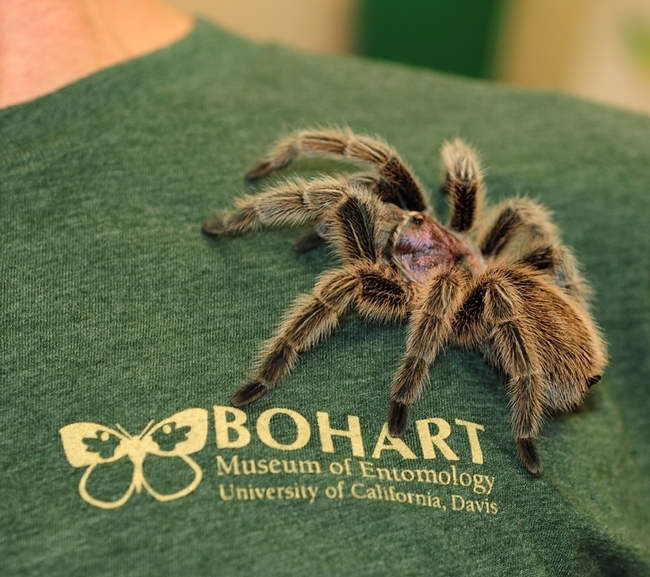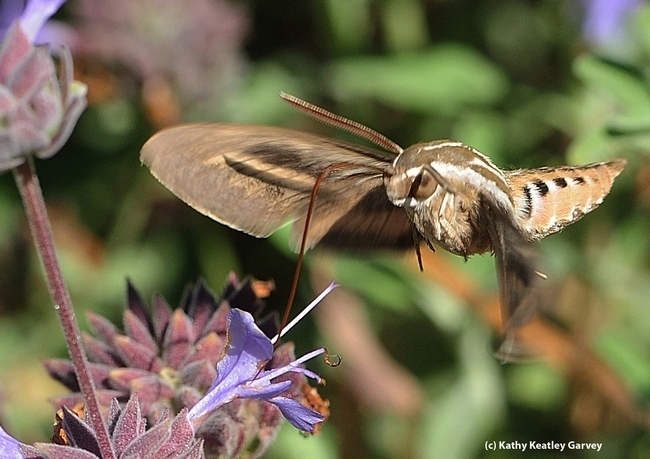
- You'll learn how spiders and dragonflies catch their prey
- You'll watch a tarantula grab its prey
- You'll learn how moths have evolved to elude bats and their echolocation
- You'll see carnivorous plants and maybe take one home
- You can eat a crickette (cricket)
- You can buy a trapdoor spider t-shirt that glows in the dark, and
- You can engage in a family arts and crafts activity.
And it's all free and family friendly.
The open house, themed "Specialized Predators of Insects," takes place from 1 to 4 p.m. at the Bohart Museum, located in Room 1124 of the Academic Surge Building, 455 Crocker Lane, UC Davis campus. Parking is also free.
The event will feature talks by UC Davis doctoral candidates Christofer Brothers, a dragonfly specialist, and Emma “Em” Jochim, a spider specialist. They will present talks from 1 to 1:30 p.m. in the Museum of Wildlife and Fish Biology classroom (across the hall from the Bohart Museum). Visitors will then gather in the Bohart Museum for more activities from 1:30 to 4 p.m.
“We'll be discussing predators of insects above (Odonata) and below (Arachnida),” said Jochim. “We will talk about what predators are and how we categorize them, and then discuss how arachnids, dragonflies, and damselflies fit in those descriptions. There will also be some examples of unique adaptations that have evolved to help these groups predate insects. At the open house there will be live feedings every hour where we'll get to see tarantulas in action!”
Brothers and Jochim anticipate receiving their doctorates in the spring of 2026. Brothers is with laboratory of Professor Stacey Combes, Department of Neurobiology, Physiology and Behavior, College of Biological Sciences, and Jochim is a member of the lab of Professor Jason Bond, who serves as the Evert and Marion Schlinger Endowed Chair, UC Davis Department of Entomology and Nematology; associate dean, UC Davis College of Agricultural and Environmental Sciences; and director of the Bohart Museum.
The Combes lab researches biomechanics and behavioral ecology of flying insects, while the Bond lab studies arthropod diversity.
Spiders Are Very Misunderstood. “I'm drawn to spiders because of the diversity of species, habitats in which they live, and variety of behaviors they exhibit,” said Jochim. “I think they're very misunderstood and love educating people on why spiders are awesome and essential to all ecosystems in which they're found.”
"I'm drawn to dragonflies and damselflies because of their unmatched prowess as predators, diversity of hunting and mating behaviors, impressive vision and flight abilities, and their cultural esteem across the world,” Brothers said.
Postdoctoral research scientist James Starrett and graduate student Iris Quayle of the Bond lab will be displaying their work on spiders and answering questions.
Jeff Smith, curator of the Lepidoptera collection, and fellow Bohart associate Greg Kareofelas will be displaying special moth specimens. “Jeff is working on highlighting the cool adaptations of moths, how they have evolved to elude predators,” said Tabatha Yang, the Bohart's education and outreach coordinator.
Said Smith: "Much will focus on the ability of moths to elude bats and their echolocation, such as the use of long hairs on their bodies and wings that absorb the signals, tiger moths that can emit a rapid series of clicks that confuse the bats, long tails on silk moths that are twisted and disrupt the echolocation so the bat cannot home in on the moth. With tiger moths that clicking may also be a warning to bats that the moth is terribly distasteful."
How Moths Evade Bats. "Many moths, such as noctuid moths, sphinx moths, and even some butterflies are able to hear the bat searching for them and will immediately take evasive action," Smith noted. "During the daytime hours, moths may use wonderful camouflage to hide in plain sight, as with underwing moths and many sphinx moths. Or their larvae may resemble non-foodlike bird feces, as with swallowtail butterflies or even adult moths in the family Noctuidae."
"Many moths, either as the adult or the larva, may employ features that startle predators or make them wary of feeding on the moth, such as large false eyespots on the wings, bright colors that suddenly appear, or a remarkable resemblance to a snake," Smith shared. "Of course, many kinds of butterflies and moths are toxic and distasteful, such as the tiger moths, heliconian butterflies. Many moth larvae can be extremely venomous due to their urticating hairs, such as silk moths or puss moths." Highlights will be posted on many of the specimen drawers.
The UC Davis Entomology Club will be seeking donations through the display and sale of carnivorous plants, many grown by club advisor and emeritus faculty member, forensic entomologist Robert Kimsey. Undergraduate student Julianna Campos will be bringing 54 seed-grown Sarracenia leucophylla “White Trumpet Pitchers” that she grew.
In addition, open house attendees will be invited to sample free "crickettes" (dried, edible crickets), Yang said. The Bohart Museum open house coincides with with the annual UC Davis Parent/Alumni weekend.
Trapdoor Spider T-Shirts. Sales in the Bohart Museum gift shop will feature the popular glow-in-the-dark trapdoor spider shirts. A family arts and crafts activity is also planned.
The Bohart Museum, founded in 1946 by noted UC Davis entomologist Richard Bohart, houses a global collection of eight million insect specimens, plus a live petting zoo (including Madagascar hissing cockroaches, stick insects and tarantulas) and an insect-themed gift shop, stocked with t-shirts, hoodies, books, jewelry, posters, stuffed toy animals, collecting equipment and more.
Fall public walk-in hours are on Tuesdays and Wednesdays, from 1 to 4:30 p.m. The walk-ins are free. and open to all ages. Hourly parking fees apply, but there is free, 30-minute parking along Crocker Lane.
More information is available on the website or by contacting bmuseum@ucdavis.edu.
Attached Images:


